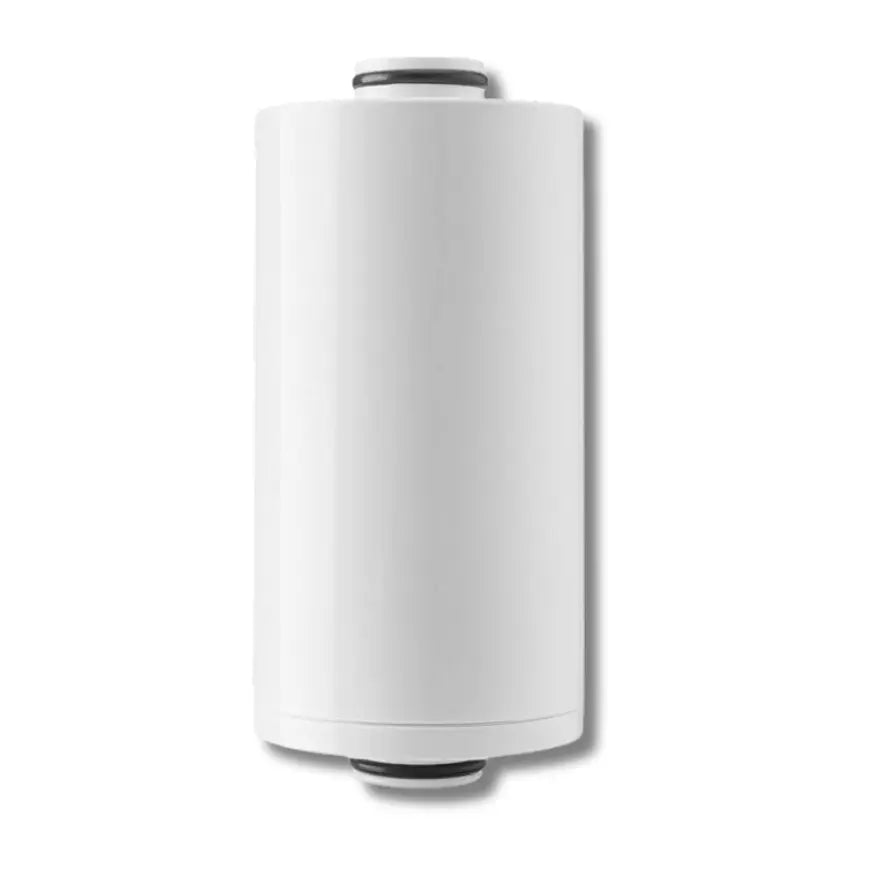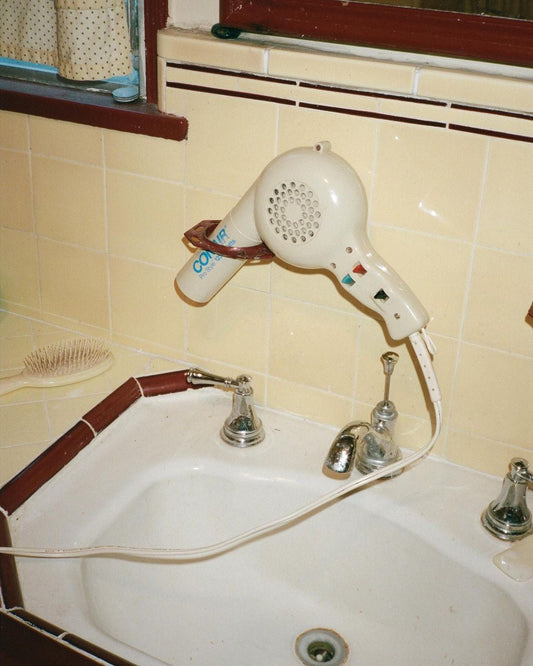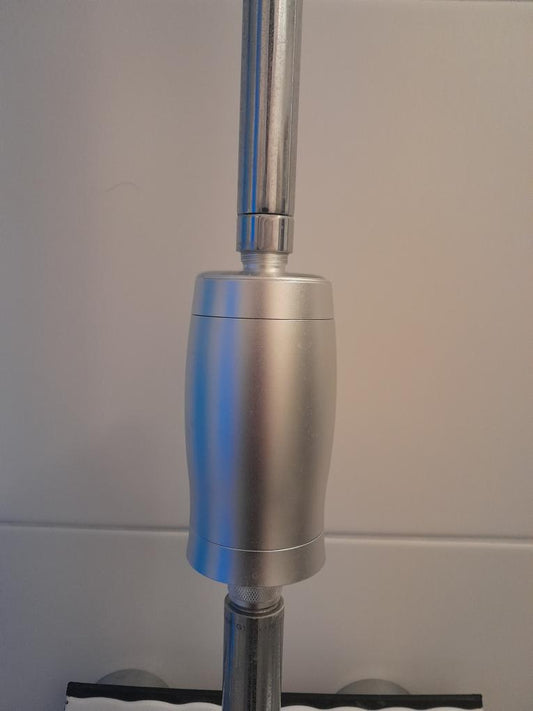What Are Shower Head Filters?
Shower head filters are compact, point-of-use devices that attach directly to your existing showerhead or sit between the hose and the head itself. Their main role is to filter out chlorine, heavy metals, sediments, and other common impurities found in municipal tap water. By doing so, they help deliver cleaner water to your skin and hair — especially valuable if you’re dealing with hard water issues, dryness, or irritation.

Most filter shower head models use a combination of filtration media — typically activated carbon, KDF (Kinetic Degradation Fluxion) media, and ceramic beads. These layers work together to neutralise chemicals, bind to contaminants, and reduce odours. Some premium versions also include vitamin C blocks to neutralise chloramines (used in water disinfection alongside chlorine).
If you’ve ever searched for a “shower head with filter” online, you’ve likely seen models promising 5-stage, 15-stage, or even 30-stage filtration. While that sounds impressive, what matters most is the quality of the materials inside and whether they’ve been independently tested for results.
At Nordisk Renhet, we’ve engineered our shower filter specifically for European water — where chlorine and hardness are a common duo. More on that shortly.
Why Filter Your Shower Water?
Most people think about filtering drinking water — but what about the water you shower in daily? It turns out that your skin is your body’s largest organ, and it absorbs many of the substances found in unfiltered shower water. If your local supply contains chlorine, chloramines, or heavy metals, these can enter your body through both inhalation and skin contact.
Beyond health concerns, the more immediate issue many people face is dry, itchy skin or lifeless hair. Chemicals like chlorine strip the skin of its natural oils, disrupt your skin barrier, and can cause long-term irritation or flare-ups — especially for those with eczema or scalp conditions.

Inhaling steam from hot showers also poses a hidden risk. During a warm shower, chlorine can vaporise into the air and be absorbed into the lungs — something many people don’t realise. This effect is more pronounced in smaller bathrooms with poor ventilation.
Real Result: “I didn't think such a filter could do so much for skin and hair. Noticed difference right away. My hair feels softer and shinier. My skin feels moisturised.” — Suzanna, verified customer
That’s why a shower filter isn’t just about feeling fancy — it’s about protecting your health, hair, and skin from exposure to substances that don’t belong in your daily routine.
Common Shower Water Contaminants
Even if your tap water is deemed safe to drink, it may still contain substances that harm your skin, scalp, or respiratory system — especially when exposed to heat during a shower. Below is a breakdown of the most common offenders found in household shower water across Europe:
| Contaminant | Common Source | Effect on Skin & Hair |
|---|---|---|
| Chlorine | Municipal disinfection | Dries skin, strips hair of natural oils, irritates eczema |
| Chloramines | Chlorine + ammonia (used in place of chlorine) | More difficult to remove; may trigger irritation |
| Hard Water (Calcium & Magnesium) | Naturally occurring minerals | Clogs pores, dulls hair, causes soap scum buildup |
| Iron | Corroded pipes or groundwater | Stains, clogs, can exacerbate scalp conditions |
| Lead | Old plumbing systems | Toxic absorption through skin possible in trace amounts |

If you’ve ever noticed a chlorine odour in the shower or white residue on your tiles and taps, you’re already seeing the signs. But it’s what you don’t see — the trace chemicals and minerals — that often cause the most damage to your skin barrier and scalp health over time.
Related read: How Hard Water Affects Your Skin and Hair
How Do Shower Filters Actually Work?
Shower filters are compact devices that sit between your water supply and your showerhead. Their purpose? To reduce or eliminate unwanted substances before they hit your skin and hair. But how they do this varies depending on the technology used inside. Let’s break it down:
🔬 The Three Most Common Filtration Methods
- Activated Carbon — Adsorbs chlorine and volatile organic compounds (VOCs). Works well for odour, taste, and chlorine removal.
- KDF (Kinetic Degradation Fluxion) — A copper-zinc alloy that uses redox reactions to neutralise chlorine, lead, mercury, and other heavy metals.
- Ceramic Beads — Physically filter out sediments and can reduce bacterial growth. Often used to prolong filter life and improve water clarity.

When water flows through the shower filter, these filtration stages capture or convert unwanted elements. For example:
• Chlorine is converted into harmless chloride ions
• Heavy metals like lead are trapped in the KDF layer
• Sediments are physically blocked by ceramic structures
Most filters combine multiple media layers to target a range of contaminants. However, they do not typically remove hard water minerals like calcium and magnesium — more on that in the next section.
✅ Additional Features in Advanced Filters
- Vitamin C capsules — Neutralise chloramines and promote skin repair
- Maifan stones — Add trace minerals for pH balance
- Far infrared balls — Claim to energise and ionise water (evidence limited)
While these extra stages sound exciting, be wary of marketing gimmicks like “20-stage filtration” without scientific backing. What matters most is the type of media used and how well it’s tested.
Do Shower Filters Soften Water?
This is one of the most misunderstood aspects of shower filters — and one of the most important to clarify.
Short answer: No, shower filters do not soften water. While they may improve how water feels by removing chlorine or odours, they do not remove hardness minerals like calcium and magnesium — the real culprits behind limescale, dry skin, and stiff, dull hair.

What is “softening” anyway?
Softening means reducing calcium and magnesium ions through a chemical or physical process — usually via ion exchange, not filtration.
🧪 What Shower Filters Can Do
- Neutralise chlorine (especially in cities using chlorinated water)
- Capture sediments or larger particles
- Reduce some heavy metals depending on the media type
✖ What Shower Filters Cannot Do
- Remove calcium or magnesium
- Prevent limescale buildup in pipes or on tiles
- Stop the harsh “film” effect on skin and hair from hard water
In places like Sweden, a variety of countries in Europe, and much of the UK, hard water is a major concern. If you're battling itchy skin, brittle hair, or limescale buildup on your shower glass, what you likely need is a water softener, not just a filter.
Looking for a visual explanation? Read our guide: How Hard Water Affects Skin and Hair
That said, many users find that a high-quality filter still makes a meaningful difference — by removing chlorine and odours, your skin and scalp can feel less irritated even in hard water zones. But it’s not a substitute for softening.
Do Shower Filters Remove Chloramines?
Chloramines are a more stable disinfectant used in municipal water systems — created by combining chlorine and ammonia. They’re harder to remove than chlorine alone, and unfortunately, most standard shower filters aren’t designed to deal with them.
In countries like the UK and Ireland, some regions have started using chloramines in place of chlorine. While this is less harsh on infrastructure, it's still harsh on your skin — particularly for people with eczema, asthma, or allergies.

Can Any Shower Filter Handle Chloramines?
Yes — but only some. To break down chloramines, a filter must use catalytic carbon rather than regular activated carbon. This upgraded carbon has been treated to react more effectively with combined chlorine compounds.
Additionally, some filters also use KDF-55 media, which performs a redox (reduction–oxidation) process, breaking apart some chloramine bonds — though not completely on its own.
✅ Filters That Help With Chloramines Should:
- Contain catalytic carbon, not just coconut-based activated carbon
- Be rated for both chlorine and chloramine reduction
- Be transparent about specifications and testing
Nordisk Renhet’s filters target chlorine primarily — but our new filter generation uses an enhanced blend to help mitigate both free and combined chlorine effects on sensitive skin.
If your water report shows chloramine usage, or if you’ve noticed a lingering chemical smell after a shower, it’s worth investing in a system designed to specifically reduce chloramines — not just chlorine.
Do Shower Filters Reduce Water Pressure?
This is a common concern — and a valid one. After all, nobody wants a slow, underwhelming stream in the middle of their morning routine. The good news is that most well-engineered shower filters maintain excellent water pressure — especially when installed correctly.
But pressure issues do occur, and they’re usually the result of:
- Using low-quality filters with narrow flow paths
- Allowing sediment or scale to build up inside the cartridge
- Incorrect installation or clogged existing plumbing

How To Avoid Low Pressure
If you’re using a Nordisk Renhet filter, you can expect consistent household water pressure. Our filter is:
- Tested to maintain a stable flow rate of 6.5–7.5 litres per minute
- Engineered with a precision flow stabiliser for smooth, even water delivery
- Fully compatible with standard plumbing and flexible adapter setups
Note: Our 2m silver hose and adapter options are designed for ease of installation and compatibility — they do not affect water pressure, but ensure full function across different setups.
Pro Tip:
Always check your filter for visible scale or residue if you notice a pressure drop. It may be time to replace the cartridge — or flush your plumbing if you’re in a high-limescale region.
How Long Do Shower Filters Last?
One of the most important — and overlooked — factors in choosing a shower head filter is its lifespan. Many filters make promises, but fall short when it comes to durability. So how long should a quality shower filter last?
On average: 6 months or 13,000 litres of water. That’s the threshold before most filter cartridges lose effectiveness. After this point, chlorine, metals, and other contaminants begin to slip through, undoing any benefits you may have experienced.
- Daily showers for 1–2 people? Expect 5–6 months of reliable use
- Families of 3+ or frequent usage? Plan on replacing closer to 3–4 months
- High mineral regions? Lifespan may be shorter due to sediment and buildup
Signs It’s Time to Replace Your Shower Filter
- Water starts to smell like chlorine again
- Your skin or scalp begins to feel dry, itchy, or irritated
- Visible scale or discoloration on the filter casing
Tip: Stay ahead of wear. Subscribe to automatic replacement cartridges and get them delivered just when you need them.
Nordisk Renhet’s 13,000-litre certified cartridge is tested for consistent flow and filtration — and won’t suddenly stop working. You’ll gradually notice a decline, which is your signal to replace.
Bonus for Subscribers
Subscribers enjoy free lifetime warranty on the filter housing, plus priority support if any issues arise. Just another way we help you keep your water — and your skin — consistently cared for.
How To Choose the Best Shower Filter
Choosing the right shower head filter isn’t just about picking the one with the most “stages” or the flashiest packaging. To really protect your skin, hair, and peace of mind, you need to look for proven filtration materials, compatibility, and reliability.
Top Criteria to Look For
| Feature | Why It Matters |
|---|---|
| Activated Carbon & KDF | Proven to reduce chlorine, odours, and heavy metals |
| Standard Size & Easy Fit | Fits any existing hose or showerhead without tools |
| Transparent Claims | Avoid vague terms like “ion boost” or “34-stage” gimmicks |
| Certified Performance | Look for independent testing or real reviews |
Why Simplicity Wins
Some manufacturers try to impress with 12-stage, 20-stage, even 34-stage filters. But most of these stages are just variations of the same media or unproven gimmicks (like magnets or “tourmaline balls”). Stick to what’s verified and essential: carbon, KDF, and reliable design.
Recommended: The Nordisk Renhet shower filter is compact, independently reviewed, and specifically designed to suit European water — including hard water zones.
Above all, your shower filter should support the real outcome you’re after: softer skin, calmer scalp, and more manageable hair — without fuss or fake science.
What Is a Bath Filter?
While most people focus on shower filters, bath filters are a lesser-known but equally important option — especially if you prefer soaking over rinsing. Bath filters are designed to clean the water that fills your bathtub, reducing the same irritants found in tap water: chlorine, heavy metals, and sediment.
How Bath Filters Work
Instead of attaching to a shower hose, bath filters are usually hung under the running water or placed inline at the tub faucet. As water flows into the bath, it passes through the filter media (typically a mix of KDF, carbon, and ceramic beads), helping neutralise harmful substances before they touch your skin.
- Reduces chlorine vapour that can irritate lungs and skin
- Protects sensitive skin, especially in children and babies
- Minimises dryness and post-bath itch
Is a Bath Filter Worth It?
If you enjoy regular baths — or bathe your children frequently — a bath filter is a small investment that pays off in skin comfort. Unlike whole-house systems, they’re inexpensive and require no installation.
Note: Nordisk Renhet does not currently offer a bath filter — but our shower filter is also suitable for filling the bath, depending on setup.
Shower Filter Alternatives
If you're finding that your shower water still leaves your skin dry or your hair dull — even after installing a shower filter — you're not alone. While a shower head with filter improves chlorine and odour issues, it’s not designed to handle deeper water quality concerns like hardness or heavy metal contamination.
So what else can you do? There are two main alternatives that go beyond the scope of a shower-only solution:
💡 Tip: If you're noticing hard water effects on your skin and hair, a whole-house solution may be your next step.
Whole-House Carbon Filter
Installed at the point of entry, a whole-house carbon filter treats all water flowing into your home — not just what comes out of your shower. It uses activated carbon to reduce:
- Chlorine and chloramines
- Volatile organic compounds (VOCs)
- Unpleasant tastes and odours
This solution is best if you want to protect not only your skin and hair, but also your laundry, dishes, and appliances.
Water Softeners
Unlike filters, water softeners use a process called ion exchange to remove hardness minerals — mainly calcium and magnesium. These minerals are the primary culprits behind:
- Dry, flaky skin
- Flat or brittle hair
- Soap scum and limescale
A softener will not only improve your shower feel — it will also extend the life of your appliances and reduce cleaning time.
Looking for a simpler start? Try our Nordisk Renhet shower filter as a first step. It’s designed to reduce chlorine and odours — and you can always upgrade later.
The Additional Benefits of Using a Shower Head Filter
The primary role of a shower head filter is to reduce chlorine — but its benefits go well beyond that. Many users report visible and tangible improvements to both their skin and hair after switching to a filtered shower.
1. Softer, More Hydrated Skin
Chlorine is a powerful disinfectant — but it also strips the skin’s natural oils. By removing this chemical from your shower water, filters can help reduce:
- Dryness and irritation
- Flare-ups of sensitive conditions like eczema and psoriasis
- That tight, uncomfortable feeling post-shower
Suzanna: “My skin feels moisturised. This shower filter really made my beauty routine easier.”
2. Shinier, More Manageable Hair
Filtered water rinses more cleanly, allowing your shampoo and conditioner to work properly. Many users notice their hair is:
- Softer and shinier
- Less tangled and easier to brush
- Less prone to breakage and split ends
Katriina: “I noticed it in my hair — much smoother. I don’t feel the need for deep cleansing shampoo anymore.”
3. More Enjoyable Showers
Many users are surprised by how much more enjoyable their showers feel with a filter shower head. Removing chlorine and sediment improves the water’s feel and scent, resulting in a more spa-like experience every day.
Emma: “My eczema is very clear at the moment. It’s definitely helping my skin.”
🌿 Skin and hair are sensitive to what’s in your water.
With the Nordisk Renhet shower filter, you can support your natural glow — without changing your routine.
FAQs
Do shower head filters really work? ▾
Yes — when used correctly, high-quality shower head filters can reduce chlorine, heavy metals, and odours. This can lead to less irritation, softer hair, and more hydrated skin. However, they do not remove hardness minerals like calcium or magnesium.
Can a shower filter help with eczema or dry skin? ▾
Yes. Many users report improvements in dryness and sensitivity after switching to a filtered shower. By removing chlorine and other irritants, a shower filter helps protect your skin’s natural moisture barrier — which is especially important if you suffer from eczema or similar conditions.
What does a shower head filter remove? ▾
Depending on the design, it may remove chlorine, chloramines, some heavy metals (like lead and mercury), and sediments. It will not remove calcium or magnesium unless it’s paired with a full water softening system.
How long does a shower filter last? ▾
The Nordisk Renhet replacement cartridge lasts for 13,000 litres, or approximately 6 months of daily showers. After this point, filtration performance drops and the cartridge should be replaced.
Does a shower filter affect water pressure? ▾
High-quality filters, like those designed for European water systems, are engineered for pressure optimisation. Installed correctly, you should not notice any major drop in flow or pressure.
Do shower filters soften water? ▾
No. Shower filters remove contaminants but do not reduce hardness minerals like calcium and magnesium. For that, a dedicated water softening system is needed.
💡 Still unsure if a shower filter is right for you?
Start with our guide on hard water effects or explore our Nordisk Renhet shower filter made for European conditions.
Related Articles
- What’s Really in Your Shower Water?
- How Hard Water Affects Your Skin and Hair
- Do Shower Filters Help with Dry Skin and Hair?
- How to Remove Heavy Metals from Shower Water (Part 1)
- How Chlorine in Shower Water Affects Hair and Skin




